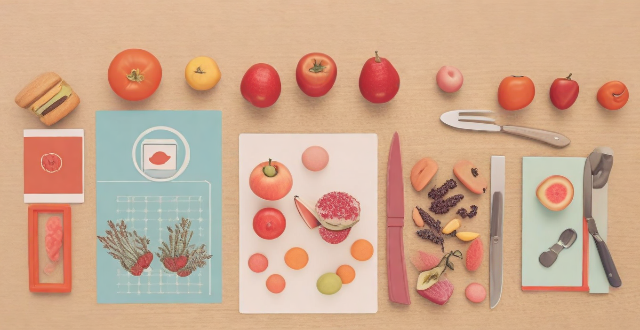To make food photos stand out on social media, focus on good lighting, composition, styling, angles, post-processing, captioning, and audience engagement. Natural light is preferred, harsh shadows should be avoided, and the rule of thirds applied for better composition. Styling can involve using complementary props and colors, while experimenting with different shooting angles adds variety. Post-processing should be subtle and consistent. Captions should tell a story, and relevant hashtags used. Engaging with your audience helps build community.

How to Make Your Food Photos Stand Out on Social Media
1. Lighting is Key
- Natural Light: Shoot your food photos near a window or outside to utilize natural light. It's softer and more flattering than artificial light.
- Avoid Harsh Shadows: If using artificial light, try to bounce it off a reflector or use a diffuser to soften the shadows.
2. Composition Matters
- Rule of Thirds: Place your subject at one of the intersecting points of an imaginary grid divided into thirds. This creates a more balanced and interesting photo.
- Negative Space: Sometimes leaving extra space around your subject can make it stand out more.
- Leading Lines: Use lines in your composition to guide the viewer's eye towards your main subject.
3. Style Your Shot
- Props: Use plates, cutlery, and other items that complement your food without stealing the show.
- Color Coordination: Consider the colors of your props and background to ensure they enhance your dish rather than clash with it.
- Textures: Incorporate different textures like wood, fabric, or marble to add depth to your photos.
4. Angles & Perspectives
- Straight-on vs. 45-degree Angle: Experiment with shooting from directly above or at a 45-degree angle for different effects.
- Close-ups: Get in close to showcase the details of your dish, like steam rising or a gooey center.
- Step Back: Sometimes showing the whole table setting or environment can provide context and tell a story.
5. Post-Processing
- Editing Software: Use software like Adobe Lightroom or VSCO to adjust brightness, contrast, saturation, and sharpness.
- Consistency: Maintain a consistent style across your photos so that viewers can recognize your work instantly.
- Don't Overdo It: Keep edits subtle and true to the original colors and flavors of the dish.
6. Captions & Hashtags
- Tell a Story: Share what inspired you to make the dish, any special techniques used, or fun facts about the ingredients.
- Relevant Hashtags: Use popular foodie hashtags but also niche ones that cater specifically to the type of food you're showcasing.
7. Engage with Your Audience
- Respond to Comments: Engaging with your followers helps build a community around your content.
- Collaborate: Partner with other food bloggers or influencers for cross-promotion and reaching new audiences.
Remember, practice makes perfect! Keep taking photos, experimenting with different styles, and analyzing what works best for your unique voice and aesthetic.